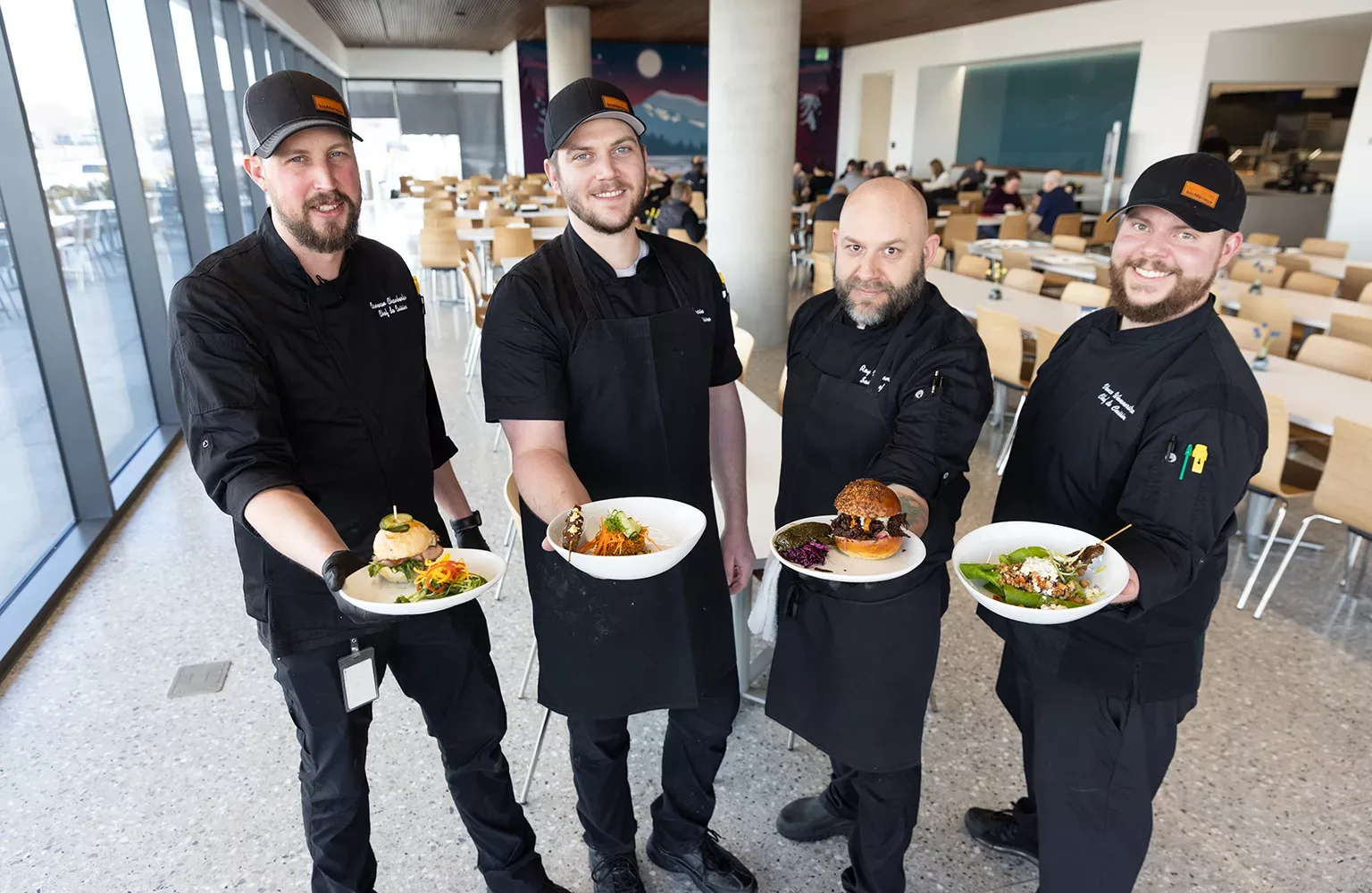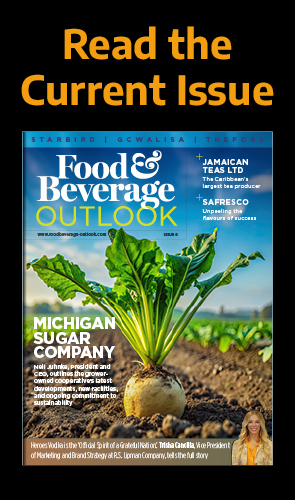What does real food mean in today’s fast-paced food service? We explore the value of fresh, wholesome ingredients and mindful consumption with Thomas Cuisine’s President and CEO, Alison Patt.
BRINGING REAL FOOD TO LIFE
In recent years, the world has shifted to focus on healthier living with nutritious ingredients. Thomas Cuisine stands at the forefront of this movement, positioning itself as a leading food service provider across North America by emphasizing real food.
First founded in 1986 by Thad Thomas, the company was born from the belief that there was a better way to deliver food service.
Earlier in his career, Thad worked for some of the largest food service providers in the country, which went through a series of changes and acquisitions. Ultimately, this impacted the people within the companies and those they served.
“While the leaders at the top of these organizations really benefited from that process, the people who paid the price for those transitions were the team members, partners, clients, and customers,” introduces Alison Patt, President and CEO of Thomas Cuisine.
“Thad truly believed that you could do food service in a way that actually took care of these stakeholders. This speaks to the fact that he was a risk-taker and an innovator who truly stuck to a set of principles that still play a key role in the company today,” adds Patt.
Over the last 35 years, Thomas Cuisine has significantly progressed, evolving from its initial mission of providing delicious food and genuine service, to having a meaningful, positive difference in the lives of others by offering real food.
Today, Thomas Cuisine caters to those who care about what they consume and serves many sectors, including healthcare, senior living, corporate dining, and independent schools.
“As we continue to grow as an organization, our mission is not to be the biggest, but to be the best,” shares Patt.
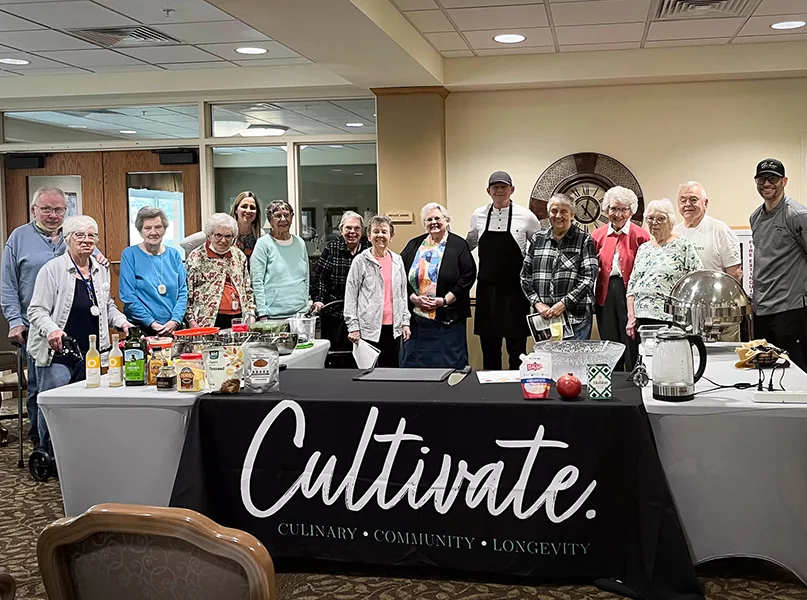
WHAT REAL FOOD MEANS
Nutrition and real food can take on different meanings depending on who you ask. For Thomas Cuisine, it’s about scratch-made foods, starting with clean, wholesome ingredients.
“Sometimes we overcomplicate health and try to break it down solely to macros, proteins, and calories. For us, it’s much more about promoting something that is wholesome and good for you. We often ask ‘would your grandma recognize that ingredient? Can you pronounce it, and if not, can you feel strongly that the ingredients you’re using are real?’” explains Patt.
In the food and beverage industry, processed and frozen meals have become more and more commonplace. As a food service provider who serves millions of meals each year, Thomas Cuisine feels a responsibility to promote balanced nutrition using fresh ingredients.
“You lose out on so much of the valuable nutrition with frozen or processed meals,” says Patt.
“From the very beginning, that’s what our founder Thad wanted to eliminate from food service.”
Although Thomas Cuisine has always been committed to scratch-made cooking, the company’s real food movement has gained momentum in the last decade. In 2016, Thomas Cuisine instituted its “no-fly list” to remove preservatives and additives from its kitchens.
The company has also built a dedicated procurement team to consistently source new whole, fresh ingredients. As a result, Thomas Cuisine’s chefs have access to clean proteins such as chicken and beef, as well as locally grown fruit and vegetables.
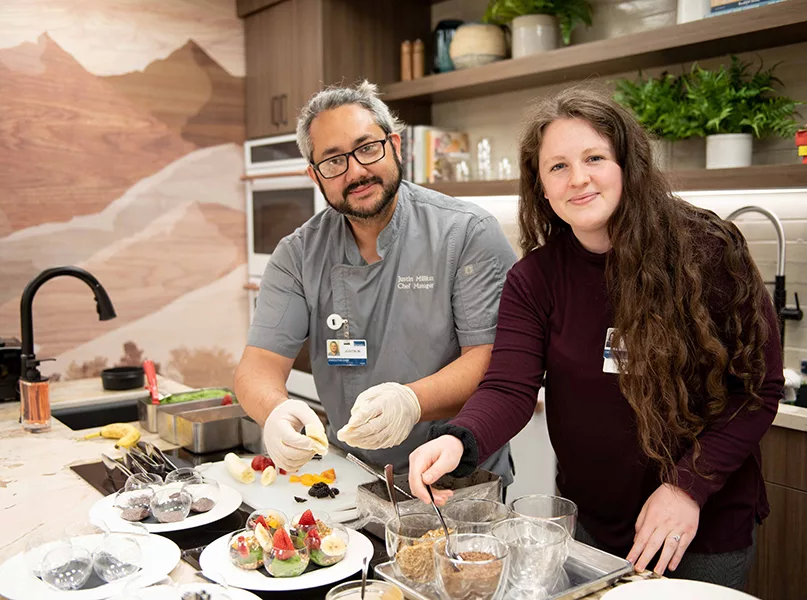
TRANSPARENCY IN SOURCING
One word Thomas Cuisine often uses to describe its food and business practices is transparency.
“Transparency in the food chain has never been a bigger topic to those we serve,” highlights Patt.
“We believe that those we serve are looking for the whole package — they want it to taste good and know that what they’re eating comes from a source they can feel good about.”
Patt goes on to explain that the food industry currently exists as a transactional entity; however, the company is striving to transform food service to be more relational.
“When the customer knows the person who grew the food and scratch-cooked the dish, they are so much more excited about their meal,” she states.
To support transparent sourcing, Thomas Cuisine partnered with Central Montana Beef, a local cattle ranch, to have direct access to grass-fed, grass-finished beef. The company is part of the journey from start to finish, and can witness firsthand how the cattle are raised, fed, and treated.
Through this partnership, Thomas Cuisine delivers nutritious, sustainable beef directly from the ranch to those they serve.
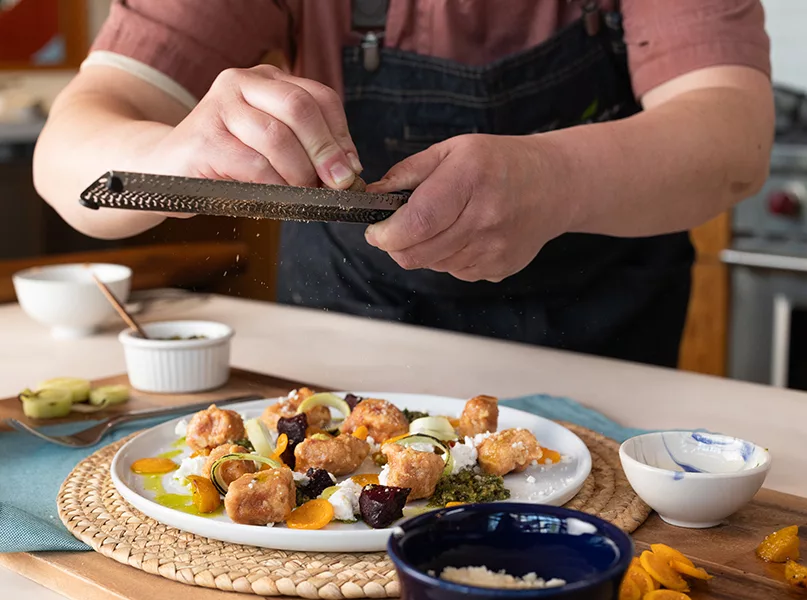
“By working directly with the ranchers, we got to see the cows grow up over the course of the year, ensuring integrity in every step of the process,” adds Patt.
“They are grass-fed, grass-finished cows on a piece of land that provides clean water, air, and space for the cows to be healthy and, in turn, healthy food for humans.”
As part of the program, the company conducts tastings in its kitchens and gives feedback to the rancher, certifying top-quality, flavorful beef.
The program took two years from inception to the final beef product, which was introduced to Thomas Cuisine’s client partners in the mountain states, including Idaho, Montana, and Utah.
Outside of the Central Montana Beef partnership, the company’s chefs work with broadline distributors and regional organizations to help encourage the local sourcing of ingredients.
For example, Thomas Cuisine’s chefs in Salt Lake City, Utah, wanted to showcase local fruits, vegetables, and meats in their dishes. As such, the chefs introduced many local vendors to the procurement team to ensure they met this requirement.
“We try to support small, local vendors, especially those that are women and minority-owned, which has become a big desire of our client partners and chefs,” says Patt.
“We have an opportunity to really showcase these local partners, and it’s a fun way for us to make an impact on our local communities.”
“Teaching people how to harness their own health in their own kitchen is something that we’re very passionate about”
Alison Patt, President and CEO, Thomas Cuisine

CULTIVATING THE COMMUNITY
With the company’s mission to spread awareness of real food, Thomas Cuisine offers the Cultivate Teaching Kitchen program as a way to educate and advocate for the joy of scratch-cooking.
The program debuted at a cancer center in Montana, where a state-of-the-art kitchen was specially designed to offer an open space with seating for chef demonstrations. Thomas Cuisine’s chefs and dietitians worked closely with the hospital care team to develop a comprehensive curriculum focused on nutrition during cancer treatment.
“Many patients had lost their appetites and didn’t feel equipped to cook in their own homes in a way that would promote health throughout their treatment,” explains Patt.
The Cultivate Teaching Kitchen program includes educational workshops from dietitians, paired with hands-on demonstrations and cooking classes by chefs. Overall, the program is designed to make cooking more approachable and tie in elements that matter most to the health outcomes of patients.
Due to the resounding success of the program in the healthcare space, it has now been expanded into other areas that the company serves, such as senior living.
Thomas Cuisine is also currently developing a community series that will provide classes to younger generations without access to education on nutrition and scratch-made cooking.
“We quickly realized that the Cultivate Teaching Kitchen program is a great way to help those that are intimidated by new ingredients and provides a learning space to test and taste new things,” says Patt.
“Teaching people how to harness their own health in their own kitchen is something that we’re very passionate about.”
Alongside its Cultivate Teaching Kitchen program and other community initiatives, Thomas Cuisine recently launched the Well-Being ThinkTank. The inaugural event brought together leaders in the senior living industry, including authors and experts from institutions such as Tufts University, to discuss strategies for longevity and holistic living.
“We really loved the idea of being part of a thought leadership group, bringing together amazing minds to shift the space going forward and promote well-being across the industry,” states Patt.
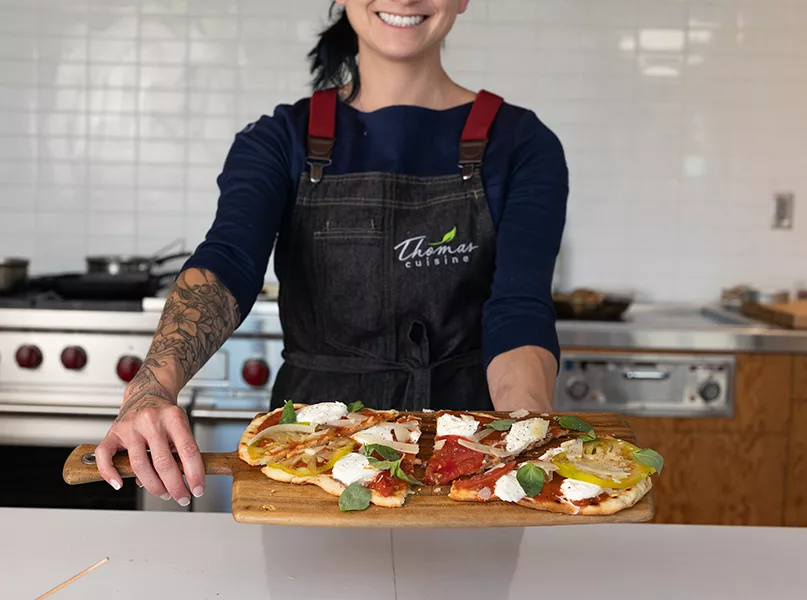
STRATEGIC GROWTH, SHARED VISION
Above all else, Thomas Cuisine strives to continue its overarching mission of bringing real food to the forefront, which presents uniquely for each individual client partner.
Instead of prescribing a one-size-fits-all program, the company provides custom plans to best meet the needs of all they serve. When choosing who to partner with, Thomas Cuisine takes careful consideration to make sure it’s the right fit.
“We are very thoughtful about the organizations we work with. I typically get the chance to meet every single partner before we enter into a contract to ensure our values and mission around food service align,” states Patt.
She further adds how the company deeply cares about growing the right way rather than the fast way. As part of this commitment, Thomas Cuisine aims to remain disciplined and grow the geographies where it is already anchored to better serve client partners and build relationships with local providers.
“Often, as businesses grow, they take their eye off the basics. We are doubling down on the fundamentals and making sure we have the right tools and processes in place to enable our team to deliver nourishing, delicious food,” says Patt.
Lastly, the company is dedicated to investing in its greatest asset: its people.
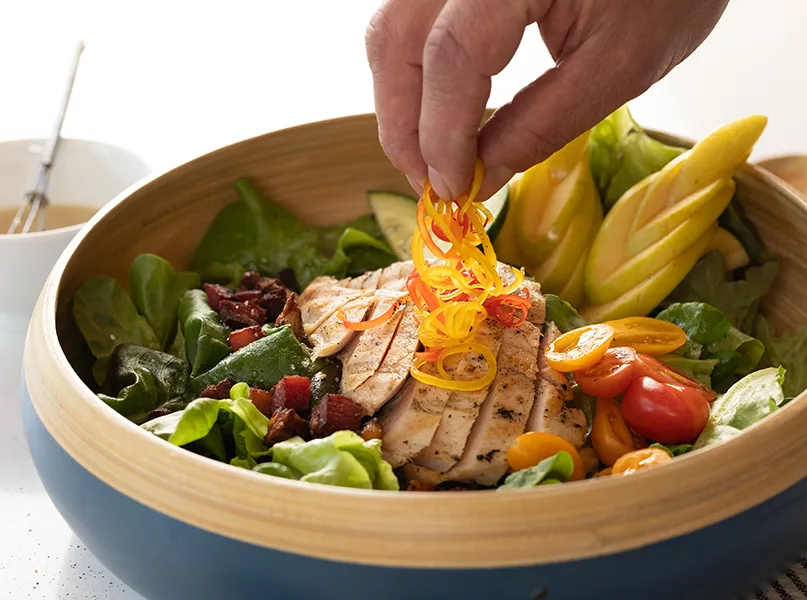
“Our people are the heart of Thomas Cuisine. We believe that if our team members are well taken care of, they are going to bring a better version of themselves to work. Our goal is to grow thoughtfully, ensuring our team members benefit from that growth.”
As the company has expanded, new benefits have been introduced to team members, including expanded family leave and bereavement benefits, alongside initiatives like profit sharing that have been anchors for the organization.
Another key part of Thomas Cuisine’s culture is promoting the health and well-being of individual team members. To aid this goal, the company teaches team members how to cook and educates them about the importance of wholesome ingredients and real food.
“We have the opportunity every day to share a little bit about how food can play a powerful role in each of our 1,900 team members’ lives. We’re on a mission to make the world better through real food, and that starts with us,” concludes Patt.
Editor’s note: Many of the business leaders featured by Food & Beverage Outlook continue sharing their insights on LinkedIn. For executives in the sector seeking to strengthen their online presence, visit LinkedIn for C-suite execs.



